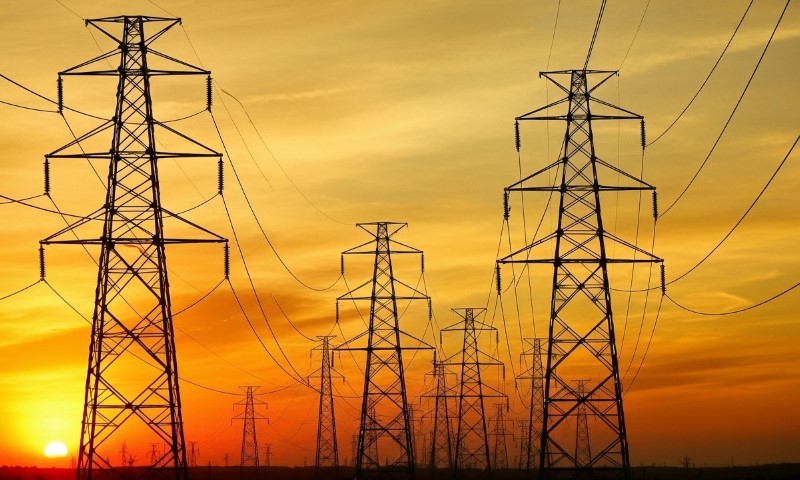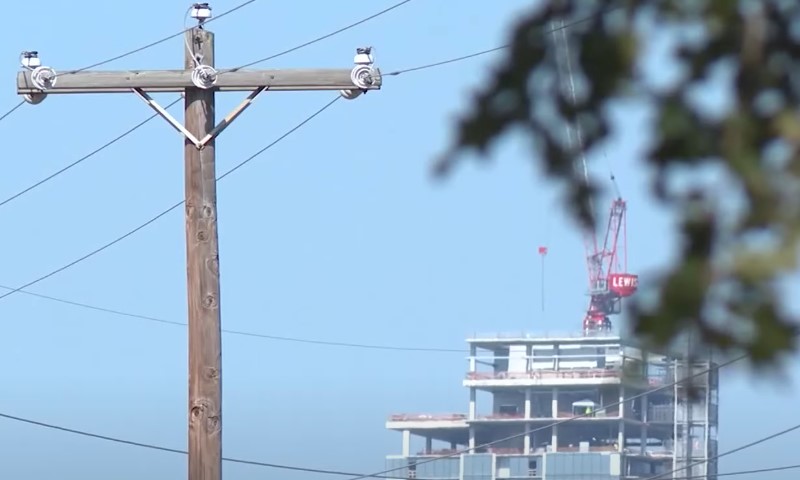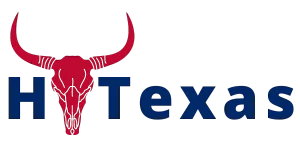Texas is gearing up for a major shift in how it handles energy efficiency and reliability. With record-breaking demand on the electric grid year after year, the state is taking a hard look at the simplest, fastest way to make the system stronger: cutting waste.
Starting in late 2025, the Texas Energy Waste Advisory Committee will officially begin work as a statewide coordination hub focused on using efficiency and demand response as real, measurable tools for reliability.
It’s a recognition that grid security doesn’t come only from new power plants and high-voltage lines; it also comes from how smartly energy is used on the customer side.
The committee will bring together agencies that rarely sit at the same table, align their programs, and target efforts toward the hours when ERCOT needs support the most.
Let’s look at why it’s happening now, how it will function, and what it could mean for Texans and the future of the grid.
Table of Contents
ToggleWhy Texas Is Acting Now
Texas isn’t waiting for another record-breaking summer to expose the grid’s limits. The state is moving early to handle soaring demand and make its power system sturdier before the next heat wave hits.
Unprecedented Demand Growth
Texas is home to the country’s fastest-growing power market, and it’s not slowing down. ERCOT’s system peak hit an all-time high of 85.508 gigawatts on August 10, 2023 , about 14 percent higher than the record set just four years earlier.
The grid operator expects summer 2025 peaks above 84 gigawatts , with daily highs consistently in the 70–80 gigawatt range throughout June and July.
Behind those numbers lies a surge of energy-hungry infrastructure: data centers, crypto mining operations, AI computing clusters, hydrogen projects, and industrial expansion across the state.
The U.S. Energy Information Administration projects ERCOT demand to grow 7 percent in 2025 and 14 percent in 2026 , far above historical averages.
The Grid Buildout Underway
Texas is not standing still on infrastructure. According to the San Antonio Express News, regulators have approved a statewide 765 kV transmission backbone , with a first phase costing around 10.1 billion dollars and an overall program near 33 billion dollars . It’s the largest upgrade in over a decade.
Meanwhile, clean generation has taken off. Solar capacity has exploded, while wind continues to provide a significant share of ERCOT’s clean energy. By mid-2025, renewable output has approached half of total generation during certain hours.
The New Texas Energy Waste Advisory Committee

Texas is setting up a statewide advisory group to make the grid stronger by cutting waste and boosting efficiency.
The new committee will bring key agencies together to focus on one mission: improving reliability across ERCOT when demand peaks.
What It Is
Created by House Bill 5323 during the 89th Texas Legislature , the Texas Energy Waste Advisory Committee officially takes effect on September 1, 2025 , and is codified in Texas Utilities Code, Chapter 18 .
It’s not another regulatory agency. Instead, it’s an advisory body focused on one central mission:
Coordinate and improve state programs that reduce energy waste, increase efficiency, and enhance demand response, all to strengthen grid reliability within ERCOT.
Why It Matters
Texas already has many energy efficiency and weatherization programs: some run by utilities, others by housing agencies or environmental regulators.
But they’ve often worked in silos. The new committee’s purpose is to unify those efforts and steer them toward ERCOT’s most critical hours , when demand is tight and every megawatt saved counts.
Timeline
| Stage | Date | Key Milestone |
| Spring 2025 | Legislative hearings | HB 5323 moves through with bipartisan support |
| June 2025 | Governor’s signature | Bill officially enacted |
| September 1, 2025 | Effective date | Committee established in law |
Why Coordination Is Crucial

Energy waste shows up everywhere: leaky buildings, inefficient cooling, industrial processes, and even outdated public facilities.
Homeowners can help too by working with Gutter Cleaning Specialists to maintain drainage and prevent structural energy loss from water damage.
Texas agencies already work on all of those areas, but often with different goals, metrics, and funding streams.
Bringing leaders from across state government into one coordinated forum can do several things:
- Eliminate duplication. Align incentives, reporting, and evaluation methods.
- Target reliability hours. Make sure programs deliver measurable savings when the grid is under strain, not just over the year as a whole.
- Share data. Combine ERCOT operational data with utility and state program results for more accurate planning.
- Push innovation. Encourage utilities, cities, and private firms to adopt new technologies that automate energy savings during high-risk periods.
What HB 5323 Actually Does
The law is built around three key pillars:
- Establishes the committee in statute. Gives it a legal home and a clear link to ERCOT reliability.
- Defines its duties. The committee makes recommendations to reduce waste, improve efficiency, and expand demand response while coordinating across agencies.
- Brings experts together. It includes members from top energy, housing, and environmental agencies, each with influence over how energy is used and managed statewide.
Likely Members
While appointments aren’t final until the law takes effect, the committee will likely include:
- Public Utility Commission of Texas (PUCT)
- Electric Reliability Council of Texas (ERCOT)
- Texas Commission on Environmental Quality (TCEQ)
- Texas Comptroller of Public Accounts
- Texas Department of Housing and Community Affairs
- Texas Department of Licensing and Regulation
- Texas General Land Office
Together, that mix covers grid operations, utility programs, building standards, emissions oversight, and public infrastructure – everything needed to attack energy waste from multiple directions.
Turning Coordination Into Reliability

A typical summer evening in Texas paints the picture. Solar generation fades, wind output varies, and air conditioning load stays high. Those last few hours before sunset can decide whether ERCOT issues a conservation alert.
The new committee’s role is to make those hours easier to manage by helping utilities and agencies focus on measurable reductions in real time. Here’s how that can happen.
1. Target Peak and Net Peak Hours
Utility incentive programs often focus on total annual savings. The committee can steer those dollars toward reducing load at the hardest hours , not just saving kilowatt-hours overall.
Some practical examples:
- Rebates for variable-speed HVAC systems that cut load at high temperatures.
- Smart thermostat programs with automated demand response during peak alerts.
- Building controls that precool spaces during lower-cost hours.
- Weatherization projects that tighten older homes , cutting evening peaks.
By aligning efficiency program schedules with ERCOT’s real stress windows, even modest savings can translate to big reliability gains.
2. Expand Demand Response Beyond Emergencies
ERCOT already runs emergency response programs, and utilities have interruptible tariffs for large customers. But many opportunities remain untapped.
The committee could promote automated, pay-for-performance demand response , where customers are compensated for verified reductions during peak hours.
It can also help standardize measurement and verification (M&V) so aggregators and tech providers can operate across multiple territories without extra red tape.
3. Improve Data and Forecasting
Load growth from new industries is reshaping the state’s energy profile. Data centers, crypto mines, hydrogen production, and EV charging all change when and how energy is used.
By coordinating across agencies, the advisory body can ensure new projects come online with built-in flexibility , like thermal storage, load shifting, or scheduled curtailment agreements, so demand growth doesn’t automatically translate to reliability risk.
4. Align Building Codes and Standards
Efficiency starts long before a building turns on its air conditioning. State and local building codes, appliance standards, and weatherization rules determine how much load hits the grid in the first place.
By syncing updates across agencies, the committee can make sure new construction and retrofits are designed for peak-hour resilience – tight ducts, good insulation, high-efficiency heat pumps, and smart controls that react to grid signals.
How It Fits Into Texas’s Reliability Strategy
The advisory committee is one piece of a broader reliability push that includes several major efforts already in motion.
| Strategy | Goal | Example |
| Transmission Expansion | Reduce congestion and move power efficiently | 765 kV statewide superhighway ($33B) |
| New Dispatchable Capacity | Add firm generation for high-demand hours | Texas Energy Fund loans for new gas plants |
| Large Load Management | Make big users more predictable | New interconnection rules for data centers |
| Energy Waste Reduction | Make demand more flexible and efficient | HB 5323 committee coordination |
Each track tackles a different piece of the reliability challenge. Together, they strengthen the system from both the supply and demand sides.
What the Committee Can and Cannot Do
Before the committee starts shaping energy policy, it helps to know where its authority begins and ends. Here’s a quick look at both.
Inside Its Scope
- Recommend and prioritize efficiency and demand response programs focused on reliability.
- Coordinate budgets, standards, and rules across agencies.
- Develop consistent metrics for measuring peak-hour savings.
- Identify barriers like permitting or data-sharing issues and propose fixes.
Outside Its Scope
- It cannot set retail electricity rates.
- It does not approve new power plants or dispatch ERCOT’s system.
- It won’t replace regulators like the PUCT or operators like ERCOT.
Its influence depends on data quality, transparency, and strong collaboration among agencies.
Year One Priorities

The committee’s early success will depend on picking practical, measurable projects. Some clear starting points include:
A. Peak-Hour Savings Roadmap
- Identify the top ten measures that deliver verified net-peak reductions statewide.
- Build a unified incentive menu across utilities so contractors and customers face consistent offers.
- Incorporate automation wherever possible to make participation seamless.
B. Data Center Standards
- Coordinate with ERCOT to ensure new data centers include curtailment tiers and cooling efficiency benchmarks .
- Tie interconnection timelines or incentives to verified demand-response participation.
C. Public Sector Leadership
- Commit state buildings to measurable peak load reduction goals .
- Incorporate those commitments into ERCOT’s seasonal planning.
D. Transparency and Data Sharing
- Publish a public dashboard showing verified peak reductions by region and program.
- Standardize measurement protocols to let aggregators operate statewide.
What Success Looks Like
When the committee’s work starts to show results, Texans might notice:
- Fewer conservation alerts on sweltering evenings.
- Shorter scarcity events in ERCOT’s real-time market.
- Lower system costs because avoided demand keeps wholesale prices from spiking.
- Cleaner air, since fewer peaker plants run during ozone season.
In other words, reliability will improve without relying solely on expensive new generation.
Complementing the Big Infrastructure Investments

Transmission and generation projects take years to complete. Efficiency and demand response improvements can happen in months.
Here’s how they fit together:
| Asset Type | Build Time | Reliability Role |
| 765 kV Transmission Lines | 5–10 years | Moves power efficiently across regions |
| New Dispatchable Plants | 3–7 years | Adds capacity for extreme peaks |
| Efficiency & Demand Response | Months to 2 years | Reduces peak demand quickly |
When the grid is under stress, both supply-side and demand-side measures matter.
Efficiency trims the total load moving across transmission lines, while demand response keeps peaks from triggering price spikes or outages. Together, they stretch every megawatt of generation further.
Costs, Bills, and Fairness

Customers care about outcomes on their bills, not just the grid’s balance sheets. Here’s what to expect:
- Upfront investments like transmission lines can raise bills temporarily, since utilities recover costs through rates.
- Efficiency programs , when targeted at high-cost hours, can offset those increases by lowering total energy use and reducing wholesale price spikes.
- Programs that reach renters, small businesses, and low-income households spread the benefits more fairly.
Challenges to Watch
Every good idea runs into hurdles. The key ones here are:
- Staying peak-focused. Savings must occur during reliability-critical hours, not just overnight.
- Data and verification. ERCOT and utilities need trustworthy, auditable measurement systems.
- Equity. Ensuring weatherization and upgrades reach those who need them most.
- Consistency. Leadership changes and shifting market dynamics can pull attention away. The committee’s best defense is public accountability through annual plans and reports.
The Bottom Line
Texas is entering a new phase of its energy story. The big wires and new plants matter, but so does what happens behind every meter.
By establishing the Texas Energy Waste Advisory Committee, lawmakers have created a tool to turn efficiency and demand response into real reliability assets.
If the group delivers on its mission, with solid data, coordination, and transparency, ERCOT will gain a buffer against stress events and Texans will gain a more dependable, affordable grid.
It’s not about doing less with less. It’s about getting smarter with what’s already flowing through the lines. And in a state where demand keeps setting records, that might be the most valuable megawatt of all.













